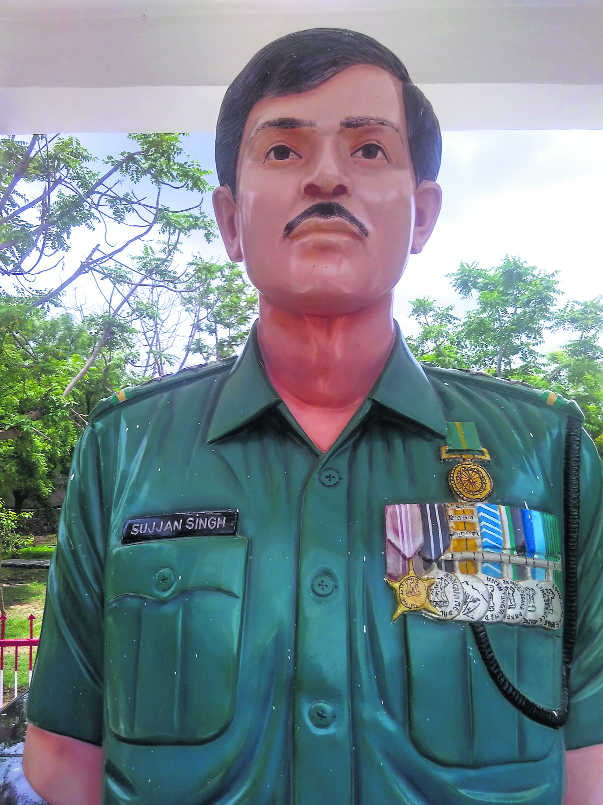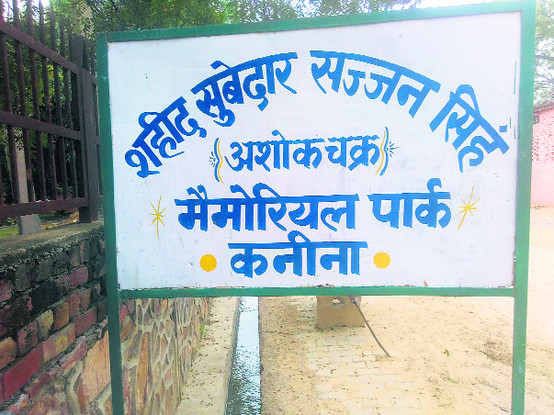

Col Dilbag Dabas (Retd)
Sajjan Singh Yadav, a third generation soldier, was born at Kanina village in Gurgaon district of undivided Punjab on March 30, 1953. Kanina now is in Mahendragarh district. He did his matriculation from Ahir High School Kanina and got himself enrolled in 13th Battalion of Kumaon Regiment. Since there was no caste based Ahir Regiment in the Indian Army, Ahirs, besides in logistical services, were generally recruited in the Regiment of Artillery or in the Kumaon Regiment of Infantry. At present, the overall strength of Kumaon Infantry Regiment comprises almost 30 per cent of Ahirs from all over India but mainly from North and Central India, including Bihar. 13 Kumaon was inducted into Jammu and Kashmir (J&K) in 1992 when the entire Kashmir valley had become a hotbed of militancy. As part of ‘Operation Rakshak’, the battalion was deployed in Kupwara district in the Kashmir valley to flush out, eliminate or nab hiding militants. Sajjan Singh, now a Subedar, was the Platoon Commander of C Company in 13 Kumaon, the same Ahir Company which created history 32 years ago in the Battle of Rezang La during the 1962 war with China when its jawans fought the Chinese ‘till last man-last round’ and 108 ‘Veer’ Ahirs laid down their lives defending the motherland. Subedar Sajjan Singh carried forward the legacy and valour of the Rezang La brave-hearts and performed the most conspicuous act of bravery and self sacrifice during ‘Operation Rakshak’ for which he was awarded the Ashok Chakra (AC), the highest peacetime military decoration. The summary of the fiercest encounter of 13 Kumaon in the Kashmir valley with militants, with Subedar Sajjan Singh in the lead, is available in the War Diary of 13 Kumaon.Subedar Sajjan Singh, AC, belonged to the most courageous part of the Ahirwal where almost every village has a memorial with the names of the martyrs engraved on it dating back to World War I. And military is still the love of lifetime for the Ahirs of this part. Even now, youths in large numbers from Kanina and other villages can be seen queuing up outside the recruiting office Rewari. Col Lilavat Singh Yadav, a veteran from Kanina, proudly claims, “For Ahirs of Kanina and nearby villages, right from World War I, military has not just been another profession, but a way of life, an honourable life”. The summary of encounter in War Diary of 13 Kumaon reads…On April 26, 1994, 13 Kumaon received information that a few militants were hiding in the jungles near Zalurah village, about 4 km north-west of Kupwara, along with inputs about their suspected hideouts. The Battalion immediately cordoned off the targeted area and began searching the dense forests for the terrorists. At 9 am, Subedar Sajjan Singh, as search party commander, spotted two hideouts of militants alongside a narrow and steep nullah. He began moving his party close to the hideout. When the party was about 15 metres from the hideout, militants started firing at them. The intense and accurate fire made it impossible for Subedar Sajjan Singh and his men to make any move forward.Finding the search party in a difficult position, the C Company Commander along with some jawans moved towards the militants so that their attention gets diverted. However, Subedar Sajjan Singh feared that the Company Commander and his party were heading straight into the jaws of death. Not caring about his own life, Subedar Sajjan Singh decided to save the lives of his Company Commander and the men accompanying him. He along with a sepoy frontally charged the terrorists through a hail of bullets. Although he received a burst of bullets in his stomach, he continued to charge, firing from his rifle.Though grievously wounded, Subedar Sajjan Singh pushed himself forward still firing his last magazine. In this fight, some bullets pierced his helmet and head and he fell but not before killing three militants single-handedly.(The writer is a veteran Gunner, 6 Field Regiment)
